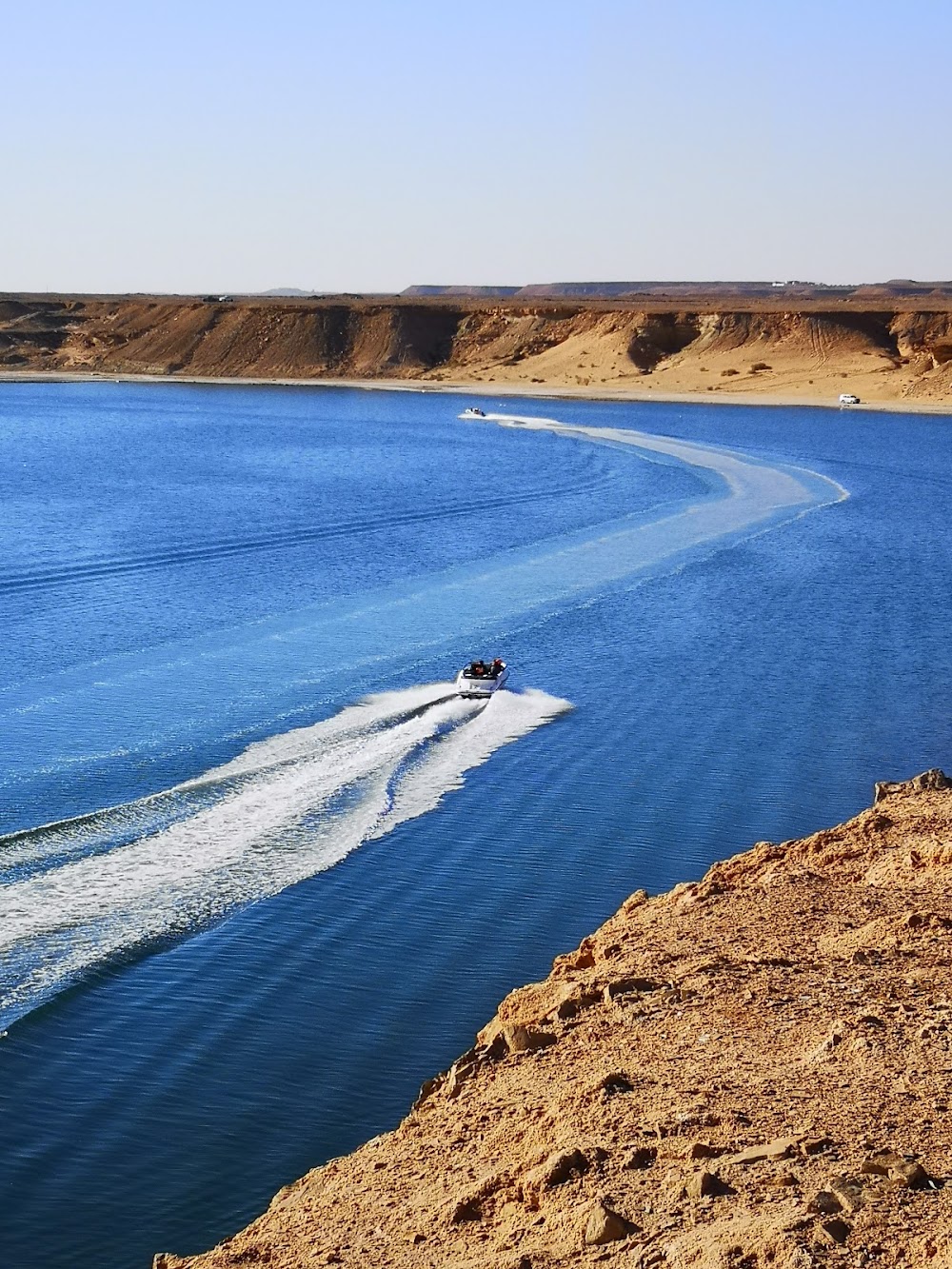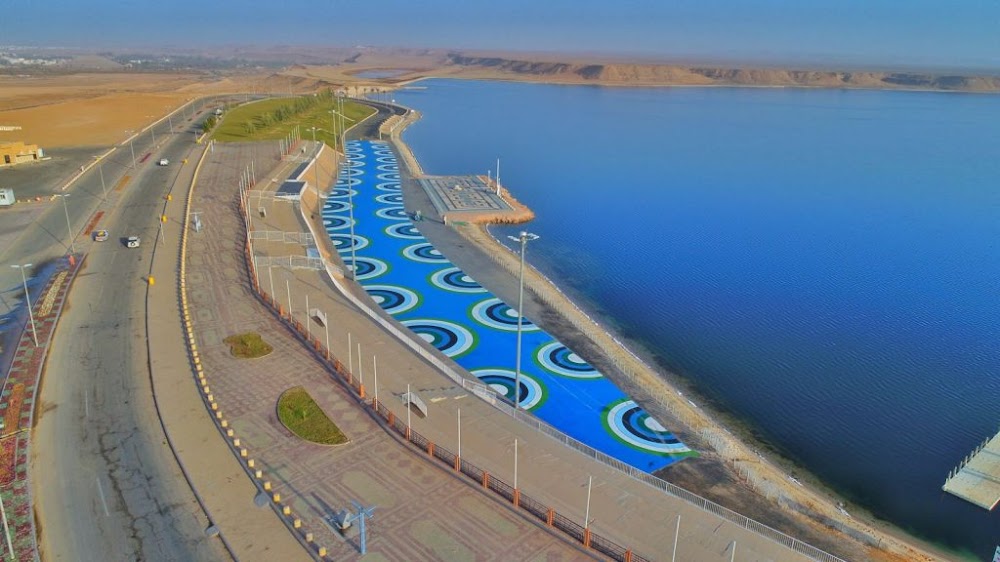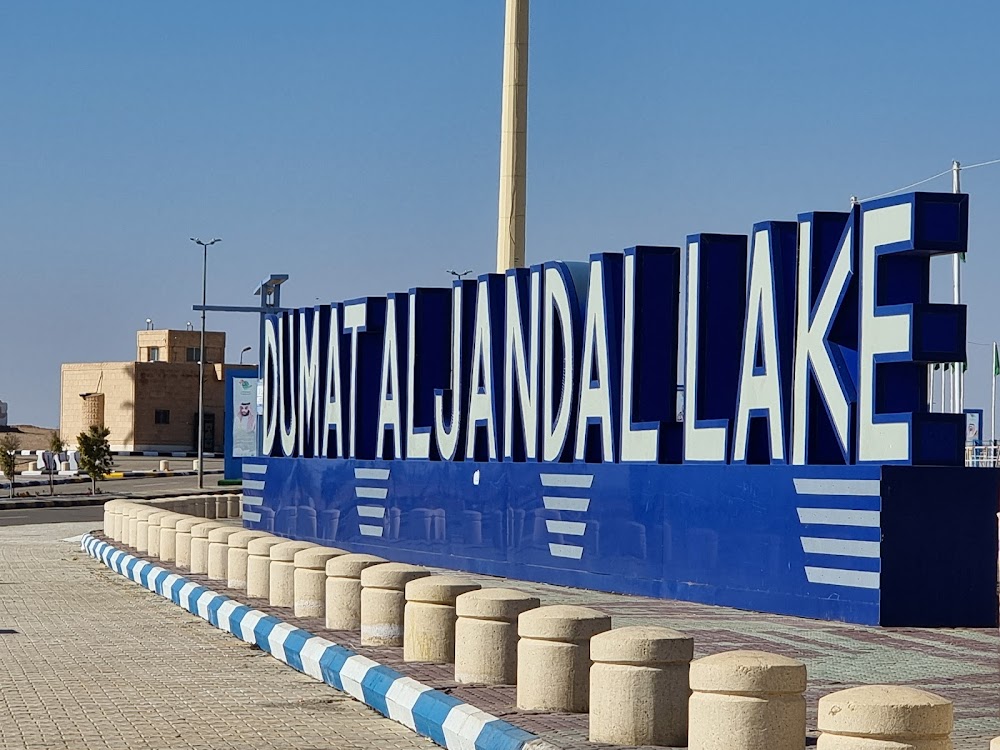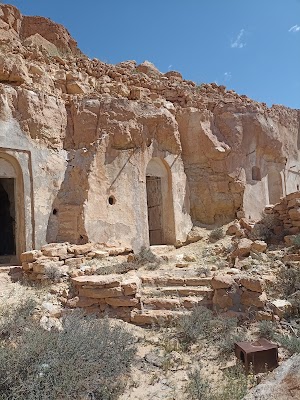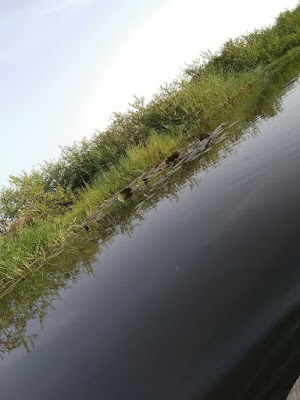Al Jawf Lakes (بحيرات الجوف)
Related Places
Overview
Lake Duma Jandal, also known as Al Jawf Lakes, is a captivating blend of natural beauty and human ingenuity located in the Kufra District of Libya. This serene oasis, nestled in the heart of the Libyan desert, transforms an arid landscape into a vibrant waterway, offering a refreshing escape from the surrounding harshness of the desert.
The Origins of Lake Duma Jandal
The story of Lake Duma Jandal traces back to the early 1960s, a period marked by significant infrastructure development in Libya. The discovery of vast fossil water reserves lying beneath the desert sparked the visionary idea to create a series of artificial lakes. These ancient aquifers, trapped for millennia, provided a sustainable water source in an otherwise inhospitable environment, paving the way for transformative agricultural and settlement opportunities.
In the 1970s, under the leadership of Muammar Gaddafi, the Libyan government embarked on the ambitious Great Man-Made River project. This monumental initiative aimed to extract water from the Nubian Sandstone Aquifer System and transport it across the country, facilitating agriculture and supporting human settlements. Lake Duma Jandal emerged as one of the remarkable achievements of this grand scheme.
Engineering Triumphs and Challenges
Constructing Lake Duma Jandal was no small feat, especially given the harsh desert conditions. The initial phase involved drilling deep wells to access the ancient aquifer. Engineers and workers confronted extreme temperatures, sandy terrains, and logistical challenges, yet their perseverance and advanced technology enabled them to extract millions of cubic meters of water.
With the water accessed, a complex network of pipelines and channels was meticulously planned and engineered to transfer it to the lake’s basin. This intricate process required years of effort to ensure efficient flow while minimizing evaporation and seepage. As the lake began to fill, the surrounding desert gradually transformed, with deep blue waters bringing life to the barren landscape.
Ecological Impact and Agricultural Transformation
The emergence of Lake Duma Jandal led to flourishing vegetation along its banks, creating a habitat for diverse plant and animal species. Migratory birds flock to the area, drawn by the newfound oasis. More importantly, the lake has become a vital water source for the surrounding Kufra District population, enabling agricultural activities in previously uninhabitable regions. Locals now cultivate crops such as date palms, wheat, and vegetables, significantly enhancing the local economy and food security.
A Recreational Retreat
Beyond its practical benefits, Lake Duma Jandal has evolved into a popular destination for both locals and tourists. Its picturesque views and tranquil ambiance provide a perfect respite from the relentless desert heat. Visitors can enjoy a variety of recreational activities, including fishing, bird watching, and boating, making it a beloved retreat for those seeking relaxation and adventure.
Challenges Ahead
Despite its successes, Lake Duma Jandal faces ongoing challenges, particularly concerning the sustainability of fossil water extraction. As these ancient aquifers are not easily replenished, continuous extraction poses a risk of depletion, threatening long-term water availability. To address these concerns, studies and initiatives are underway to discover more sustainable water management practices, ensuring that this man-made marvel can be preserved for future generations.
A Testament to Human Ingenuity
Lake Duma Jandal stands as a testament to human ingenuity, illustrating the power of visionary ideas transformed into reality. From its ambitious conception to its realization through cutting-edge engineering, this remarkable lake has breathed life and prosperity into an otherwise desolate region. Its story continues to inspire, showcasing the profound impact that carefully harnessed resources can have on both the environment and the communities that depend on them.


